For centuries philosophers have been arguing about the definition of art. We can sidestep the debate and ask the question - is art a medium by which we communicate via signs? This might explain Kant's assertion that appreciation of art is subjective. Possibly not everyone understands the same set of signs.
Semiology
What do we mean by semiology? Semiology is the study of signs and symbols and what they mean.
Signs vs symbols
What do we mean by signs?
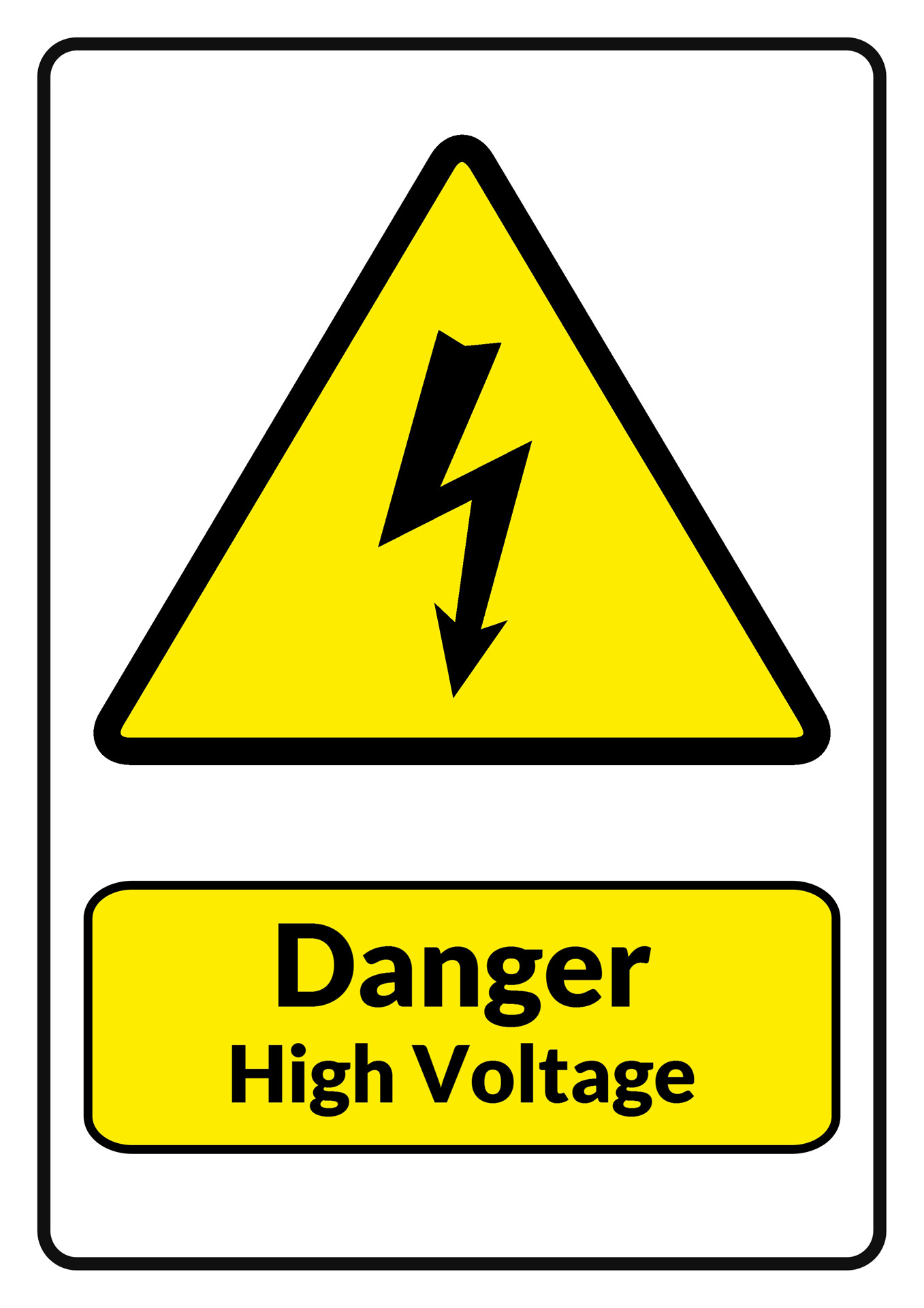
Generally a sign looks like what it represents for example a warning sign for high voltages. There is no hidden meaning to the sign.
What do we mean by symbols?
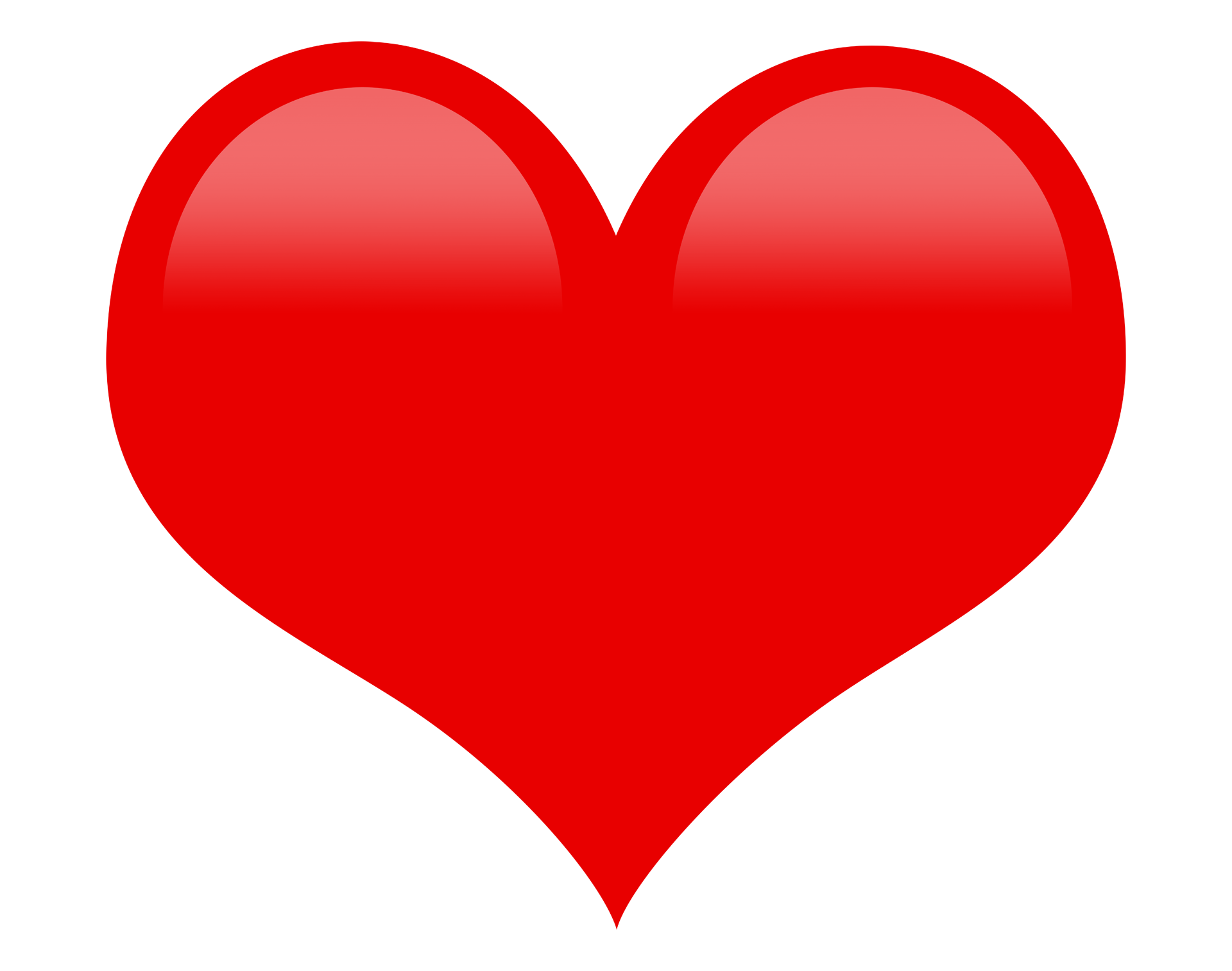
A symbol often does not look like what it represents. For example a love heart does not look like love which is a concept, or a heart, but it often represents it. Often symbols represent concepts or sets of ideas and there is a hidden meaning to the symbol.
Since visual art is a medium in which artists have always implanted their ideas via signs and symbols, it is ripe for study through the lens of semiology. Historians can also learn a lot from studying the ideas represented in art from ancient times though to the modern era.
Types of symbols
There are several types of symbols: which are pertinent to paintings

Pictogram - resembles something and invokes it without any reference to sound. They are entirely visual.


Icon - logically and recognisably represents something
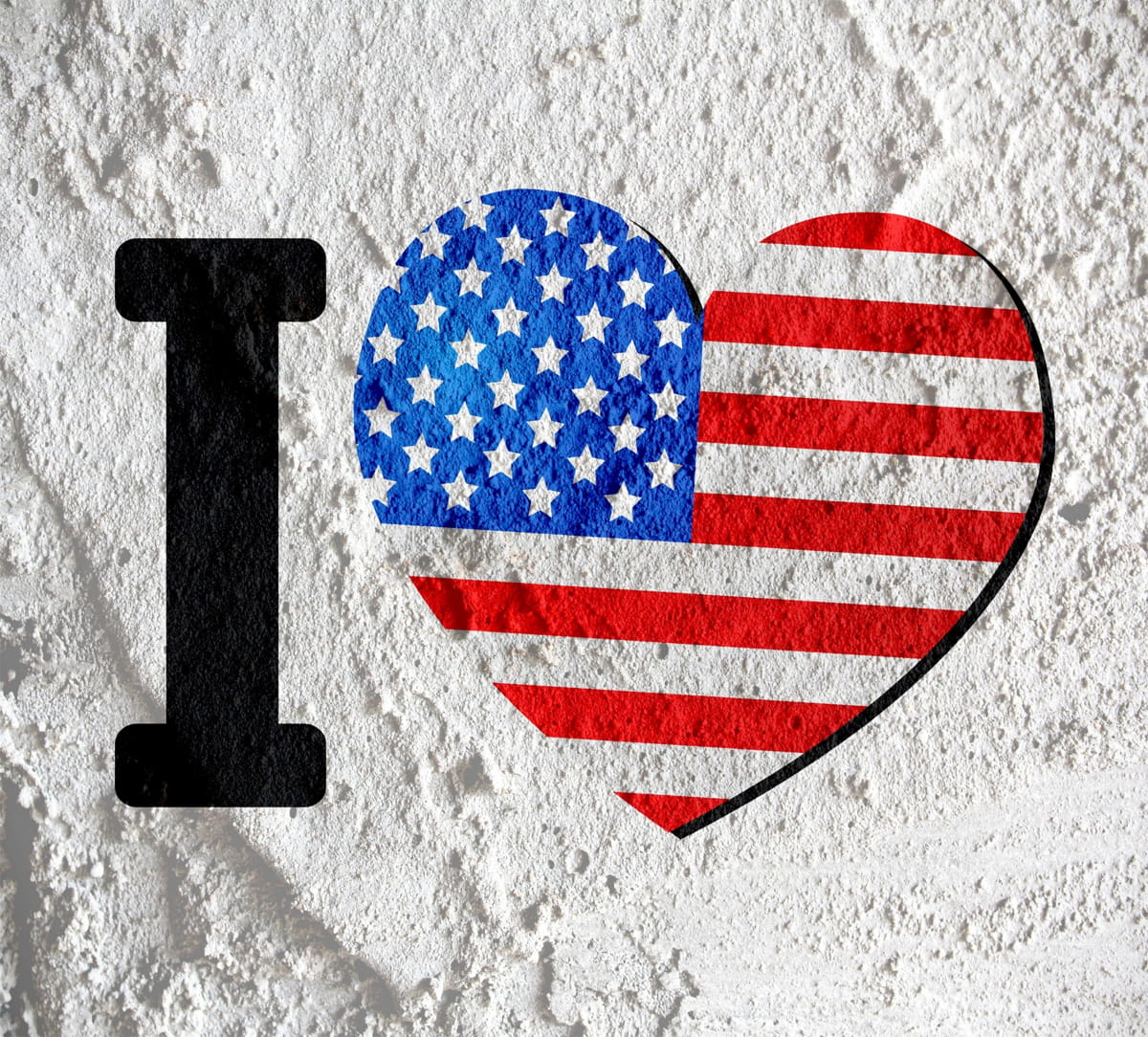
Rebus - represents a spoken sound. It usually is specific to one language
Phonogram - the letters of the alphabet are phonograms
Typogram - typographic symbols used to represent an idea e.g. 😉

Logo - a unique symbol to represent an organisation and hint at its purpose
Wordmark - a text logo such as those used by Pinterest and Facebook, usually in a distinctive font and colour
Lettermark - a letter used as a symbol such as the iconic McDonalds 'M'
Emblem - text and picture are interwoven into a whole and are inseperable
What signs and symbols can signify
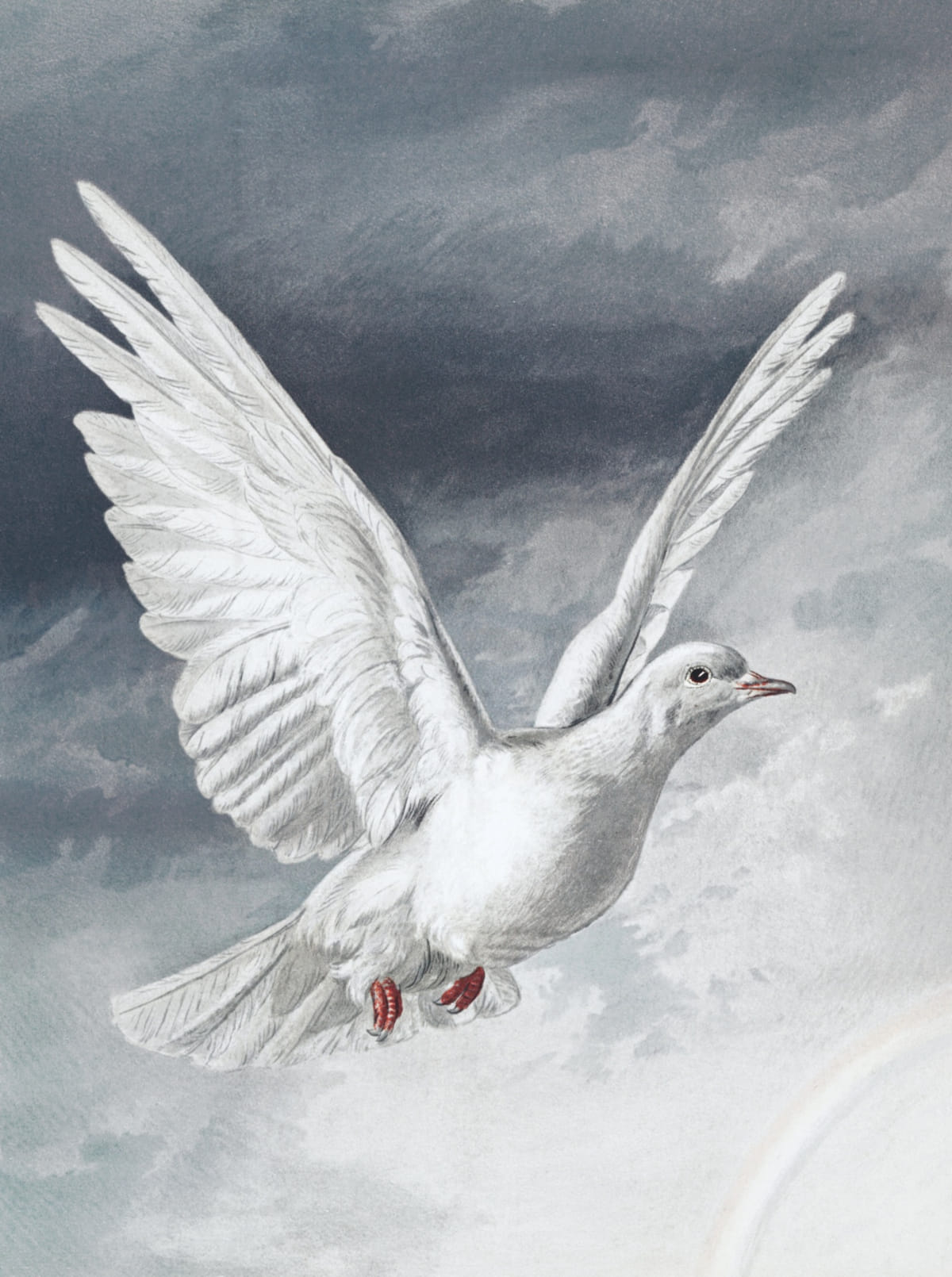
White dove
The image above shows a peace dove and this can signify several ideas. Firstly it can signify the Christian idea of regeneration after a disaster, from the idea of Noah's flood. Secondly it can signify freedom from violent conflict i.e. war. Thirdly it can signify opposition to militarism in general.
The exact meaning of a dove might depend on the context in which it is placed.
A very brief history of Semiology
Semiology is a relatively recent discipline and was first mentioned in the seventeenth century by the philosopher Locke, who mentioned semiotics which is the more specific study of signs and symbols in specific contexts. Ferdinand de Saussure made semiology an academic discipline in the late nineteenth century and set about studying signs and symbols as social devices in everyday social life.
Ancient semiology
Of course the ancients had no concept of semiology as an intellectual discipline but did understand the meaning of signs and symbols. A great example is the crucifix which emerged as the symbol of Christianity in the fourth century, during the time of Emperor Constantine.
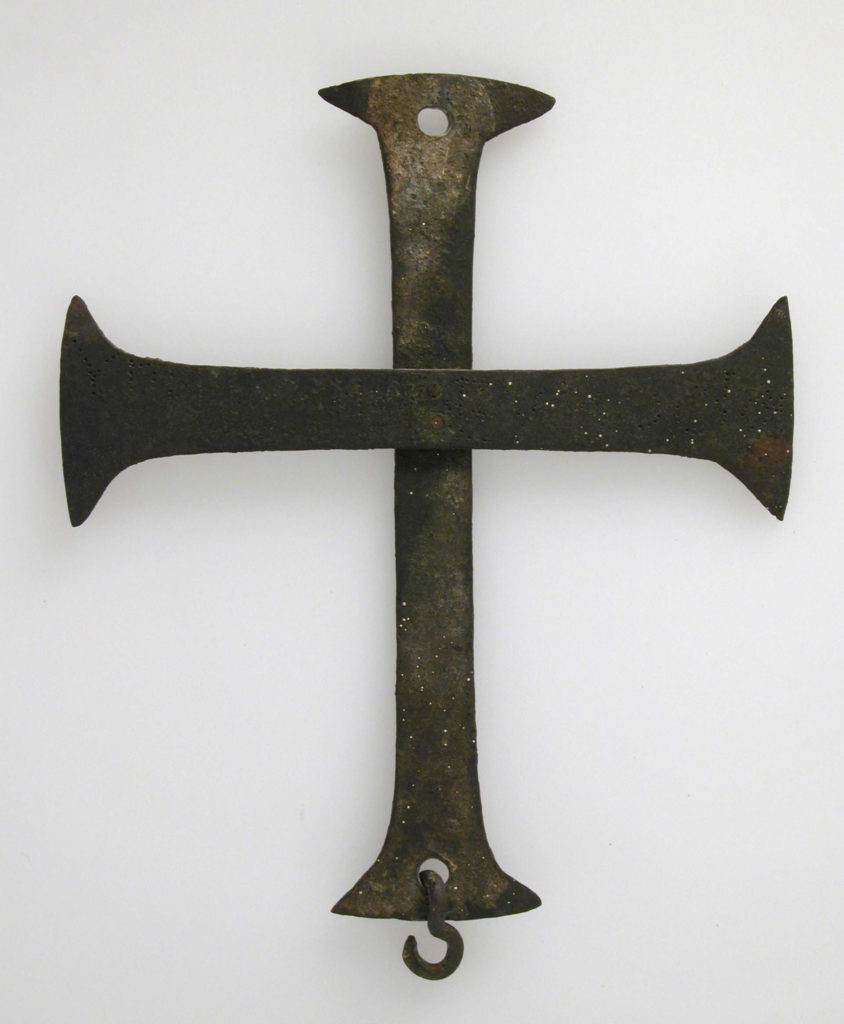
Byzantine Crucifix
Ancient Egyptian art
The art of Ancient Egypt is full of symbols, as can be seen below.
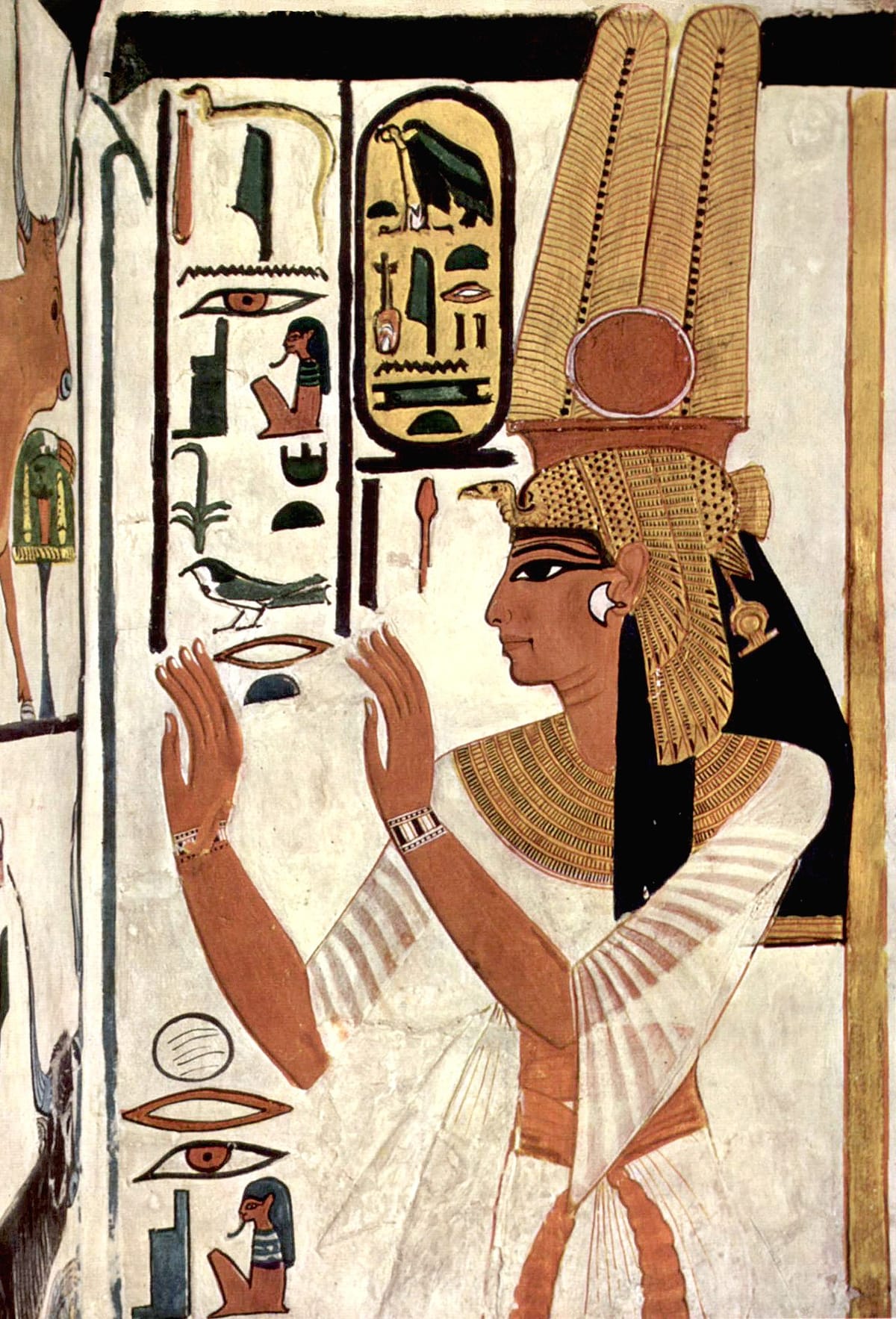
In between Nefertari's hands is an oval with sharp ends - this is actually a phonographic symbol for what we would call the letter 'R'. In her hat is the red disk of the sun which depicts omniscience and power, which the Egyptian kings and queens liked to project at every opportunity.
In Ancient Egyptian art the symbols in art both told a story and projected the power and greatness of the depicted aristocrats. The art would also help those depicted into the afterlife with which Egyptians, through their religion, were obsessed. This art was not primarily intended to be aesthetically pleasing.
Medieval semiology
Medieval art was often as obsessed with religion as Egyptian art. Various symbols featured in it. A fascinating example was the strawberry which was a symbol of perfection and righteousness as seen in the example here.
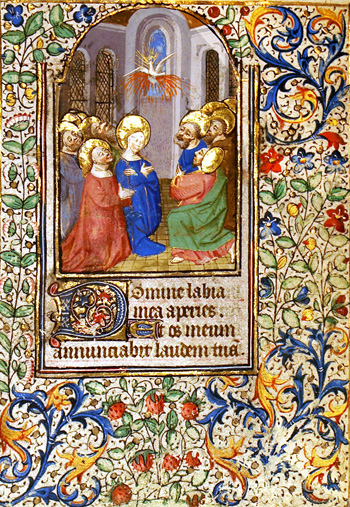
Renaissance semiology
During the Renaissance, artists could more freely experiment with symbols without fear of severe repercussions from religious acolytes. The content of art became more free.
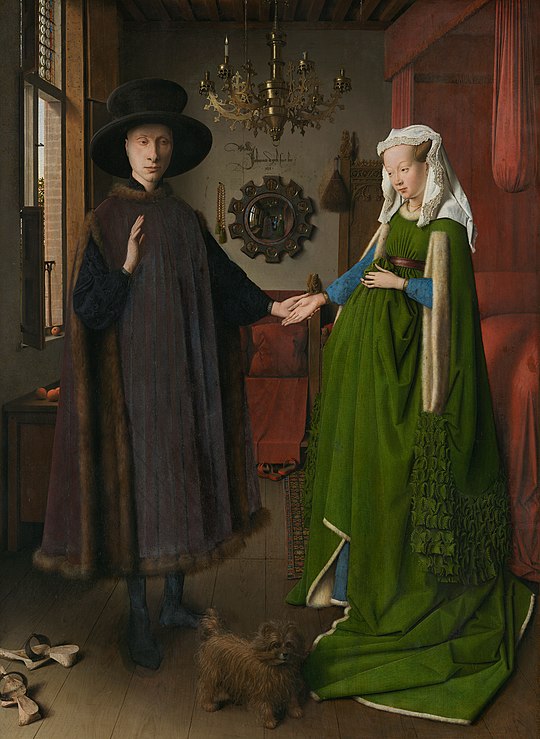
The Arnolfini Marriage by Jan Van Eyck is a good example of a freer style of painting, not to mention a more advanced technique. It has its share of symbols. The symbology of the woman placing her hand in the man's hand is said to indicate betrothal for marriage. The woman's bright green dress is said to symbolise hope for her future fertility. The dog is sad to symbolise either faithful fidelity or lust.
Modern semiology
Modern artists fill their paintings with symbols just as much as the artists of medieval and renaissance times. Sometimes a minimalist work of modern art might be just a symbol.
A Canadian sculptor once made a large public piece which was a letter 'U' intended to symbolise Canada's British heritage and its use of the letter 'u' in words such as colour, which distinguishes it from the USA spelling of colour. This feeds into a wider symbolism about Canada's plucky independence from its large and preeminent neighbour.
Picasso's Guernica
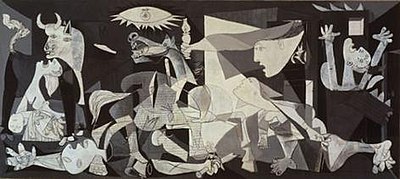
Picasso's work was full of symbolism. No more so than Guernica, his famous painting inspired by the 1937 Nazi atrocity of bombing the Spanish town of Guernica during a popular festival. Many people were killed and injured in this early Nazi blitzkrieg raid.
The eye-lightbulb at the top centre of the painting is said to represent the use of technology for evil. The black and white colour scheme of the painting reminds us of the newspapers of the time, from which Picasso learned of the atrocity. On the left the woman holding her dead child reflects the loss of life and echoes paintings by the old masters of Mary and the body of Christ.
The horse at upper centre symbolises the horsemen of the apocalypse and the people of Guernica themselves. At upper left the bull symbolises brutality and cruelty and maybe the Fascist dictator Franco.
At upper right middle the woman holding the torch symbolises Soviet Russia which was also involved in the conflict, if in a less savage way than the Fascists.
At bottom right there are three women which could represent the suffering of women in the conflict, including the many rapes committed by Franco's forces.
These interpretations of the components of the painting are generally the most commonly found ones in the many discussions about it, and are based on what Picasso himself said. However there are alternative interpretations and such a complex piece of art can always be be interpreted in many ways.
Jean Michelle Basquiat
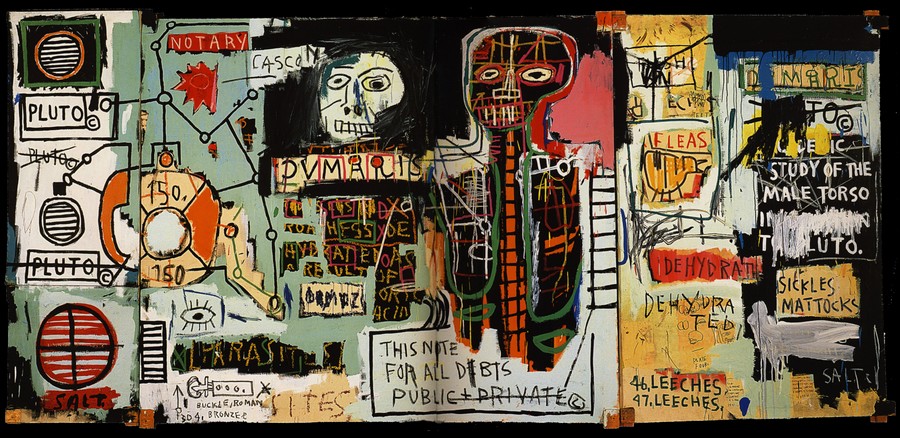 ]
]
Jean Michelle Basquiat - Notary Pluton 1983 - image courtesy https://art.moderne.utl13.fr/
Jean Michelle Basquiat was an unlikely young man to emerge as a leading artist in New York in the 1980s. American art at the time was dominated by an art establishment which favoured a style more abstract, institutional and formally intellectual that Basquiat's. Frankly Basquiat also came from the wrong community and social background to be readily accepted by the American art establishment of the day.
Basquiat's work features many symbols which are those of the 1980s counter culture.
The picture above is named after Pluto, the Greek god of the underworld, who symbolised greed, excess and illegality. The 'notary' part represents contracts, legal affairs and money. The reference to debt represents perhaps the crazy world of 1980s consumerism during the Reagan era in America, where the USA's national debt soared as did the personal debts of millions of Americans with easy access to credit cards. Basquiat in this work referred to the crazy world of 1980s New York, in which he had paradoxically become an important cultural figure. He was aware of this paradox.
Deeper semiology and the whole definition of art
Deeper symbolism can be found in art, even where there is no overt use of semiology. Even the basic subject matter of art can make a cultural statement. The female nude for example is celebrated in Western art but not in Islamic art.
Constable, the British painter and conservative, may make a statement in his depictions of rural England. Everything in its correct place, and everyone.
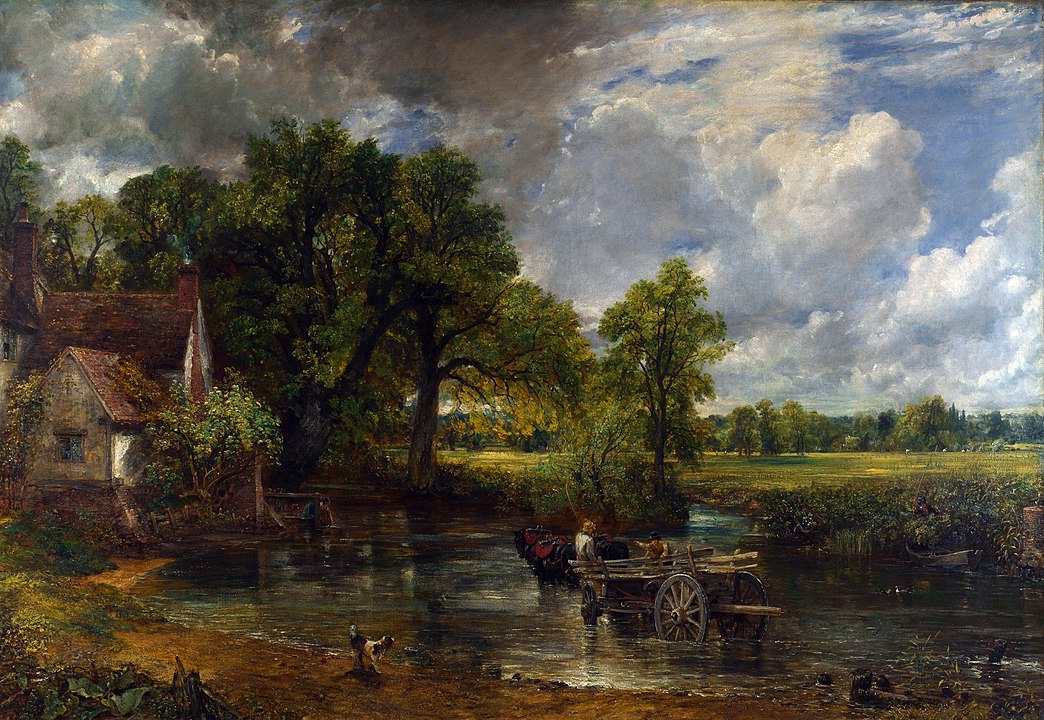
In the Haywain the rural workers in the centre of the painting are seen as almost a part of the landscape, which could imply a certain subjugation to the land based hierarchy of the time.
Possibly Constable makes a subliminal statement here just in his subject matter and its depiction. This is not to imply any malice on Constable's part; he was a man of his time who had set ideas about the natural order of things.
Is art nothing more than applied semiology?
Stone-age art was probably not conceived as decorative. Hunting and fertility, upon which these primitive communities depended, was a major feature of their art. This was probably to elicit favour from the various pre-Christian deities they worshipped.
The idea of art, as something that is an end in itself, is relatively new. Primitive art may be nothing more than applied semiology, and the art of ancient and modern societies may also feature more complex applied semiology, made and consumed by people who are better educated than ever before.
Art as a sign language between hearts
And so we come to the question: is art a sign language between hearts? Is art how our hearts speak to each other, maybe as John Lennon famously said about music, bypassing our minds?
What do I mean by hearts? I mean emotions, or our souls. That's enough definition for now.
It seems to me that all of us have in our hearts an inner evaluative framework which we may never have rationalised, and may not have the verbal toolset to rationalise. This framework is what ultimately guides our decisions, to varying extents aided by the rational intellect, but sometimes overruling it, depending on the individual.
So art speaks directly to this evaluative framework and is indeed designed by its creators to speak to the framework. This explains why many creators struggle to rationally explain their work. It was never designed to be rationally explained.
I think this assertion might solve a number of philosophical problems with art. For example - what is the purpose of art? To enable one heart to say something hoping that another heart might hear or understand where the intellect would struggle?
So art becomes a sort of shorthand method of communication, not subjected to the rigours of intellectual analysis.
Interestingly thinkers such as Jacques Derrida and others have 'deconstructed' art to look at the hidden contents and meanings within it. But there would be another blog article…








